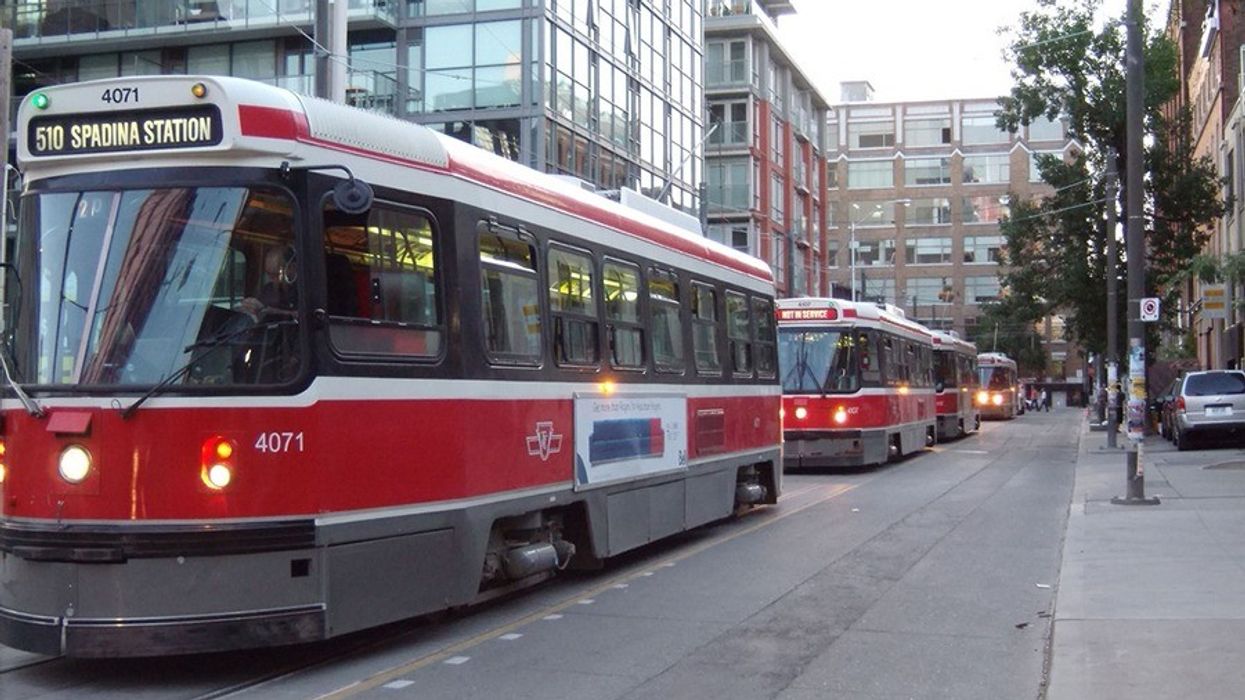Transit has never had an easy ride in Toronto. For transit planning, things have been even worse. Subject to endless delays and detours as well as constant stops and starts, it has never gone nowhere faster. The last few decades have been instructive. Let's start in 1994 when amidst much fanfare, then-premier Bob Rae launched the Eglinton West subway. One year later, his successor, Mike Harris, killed the project. The hole that had been excavated was filled in at a cost of $40 million.
A couple of decades later, the TTC, with money from the city and province, launched its successor, the Eglinton Crosstown LRT (Light Rail Transit). When completed in 2021, it will run beneath Eglinton from Mount Dennis in the west to Laird Drive, then above ground to Kennedy Road in the east. But because the price of subways has gone through the roof, this 25-station route will be serviced by LRT. It will be a subterranean streetcar line.
Then there was the Sheppard Subway, which pleased almost no one except ex-mayor Mel Lastman. It opened in 2002 and extended east from Yonge and ended abruptly at Fairview Mall. After that came the Scarborough subway extension. It dates back to the dark days of the late Rob Ford, whose transit policy was a mix of road rage and an unquestioned belief that streets belong to cars, trucks and maybe buses. Streetcars and LRTs, which got in the way and slowed traffic, weren't welcome.
The Scarborough line went through an astonishing number of permutations and variations before it was picked up and modified yet again by Mayor John Tory. He adopted the idea during his campaign in 2010, but by then so had the provincial Liberals and even the late federal finance minister Jim Flaherty. Along the way, the line went from six stops to three and, finally, one. If constructed as currently conceived, it will be a six-kilometre tunnel running from Kennedy Station to the Scarborough Town Centre.
To get a sense of how far this project has gone off the rails, keep in mind that last week Toronto City Council approved its budget for the ninth time. Since it was first OK’d in 2012, that budget has ballooned from $2 billion to $3.35 billion. At the same time, according to a city report also released last week, the number of new daily riders the Scarborough subway will attract is a paltry 2,300.
That works out to $1.45 million per passenger!
In other words, the project has morphed into a full-fledged fiasco, an outright boondoggle that defies logic and strains all credulity. Still, the chief magistrate and his allies stand behind the scheme. The mayor's argument is that it was one of the election promises he's determined to keep. Long before that, however, Ford had laid the groundwork for the subway by making it a condition of Scarborough's post-amalgamation cityhood. To refuse it would be to disrespect Scarborough, a community still smarting from years of being dismissed as "Scarberia."
But as any reputable planner will tell you, there's no justification for the line. The dean of local transportation planners, University of Toronto professor emeritus Richard Soberman, argues that the best move would be to rebuild the much-maligned fully automated Scarborough Rapid Transit (SRT) line.
"Abandoning a 30-year-old capital investment in rail rapid transit would probably make Toronto unique among major cities in the world and probably the universe," Soberman wrote in a 2015 paper. Though the TTC has rejected the notion of refurbishing the SRT and buying new rolling stock, it would cost a fraction of the subway.
Toronto's most-needed transit project is the Downtown Relief Line. First proposed way back in 1911, it would extend southwest from Pape Station to Union Station and from there northwest to Roncesvalles. As many observers have noted, however, the biggest problem with the concept is its name; to resentful suburbanites, it's another example of our fixation on the downtown core at the cost of the rest of the city. Regardless, that's where the need and numbers are.
But with congestion in the GTA estimated to be up to a $6-billion drag annually on the local economy, the need for transit is critical. Sadly, however, Toronto and the GTA have lost decades to poor planning and political neglect. It says much about the role of transit that even the woefully inadequate Sheppard line has led to more than $1 billion worth of development along the low-density artery. That's not as much as it sounds, but it's clear that mobility is a major factor when people choose where to live.
Though the city has failed to keep up with demand, the car has taken us as far as it can. The need for alternatives has never been greater. And as millennials pour into Toronto in unprecedented numbers, the pressure on public transit grows ever more urgent. Fully urbanized, this is the generation that has rejected its parents' dependence on the car. It wants transit and it wants it now.





















